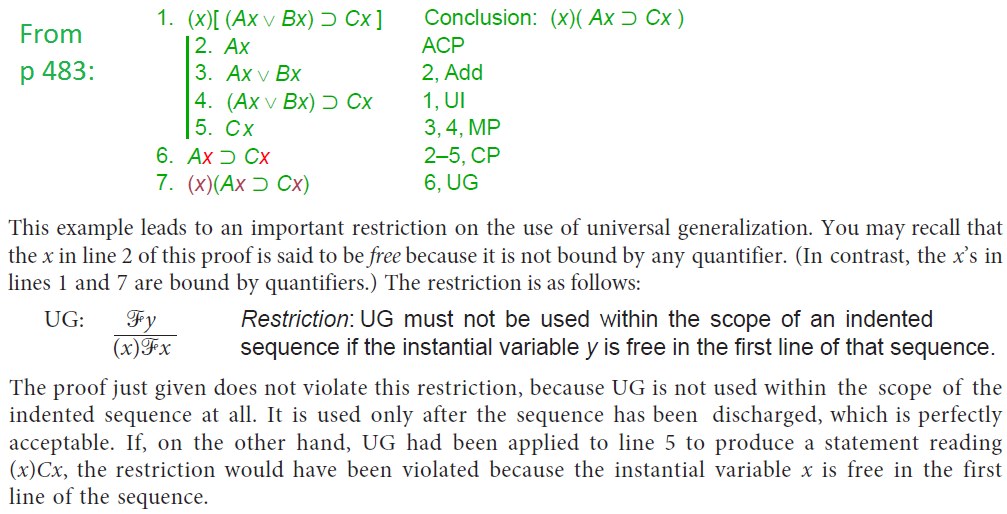Abbreviate Bound Variable to BV, Free Variable to FV, Universal Generalisation to UG, and Universal Quantifier to UQ.
Source: A Concise Introduction to Logic (12 Ed, 2014) by Patrick Hurley
[p 456:] What is still needed, however, is a symbol to indicate that universal statements make an assertion about every member of the S class. This symbol is called the UQ. It is formed by placing a lowercase letter in parentheses, (x), and is translated as “for any x.” The letters that are allocated for forming the universal quantifier are the last three letters of the alphabet (x, y, z). These letters are called individual variables. They can stand for any item at random in the universe, and they have individual constants as substitution instances.
I see the following: Since 6 has no quantifier, the red x is a FV. Since L7 has a Universal Quantifier, the purple x is a BV.
But I still do not comprehend why applying UG to 5 is erroneous. Per p 456 above, the same x is used in 5-7. Lacking any quantifiers, 5 and 6 refer to the same x.
To me, the UQ in 7 adds nothing new: the UQ states only that the x in 5 and 6 is true for all x.
But x is the only variable in this argument. So for all of what else can 5-6 be true?

